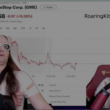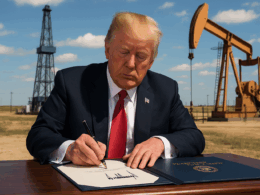We are pawns.
While this may seem far-fetched, it’s exactly how the world works.
“I.G.” stands for “Interessen-Gemeinschaft,” meaning “community of interests” or “cartel,” while “Farben” translates to “dyes,” a term that deceptively encompasses the entire field of chemistry.
With operations in over ninety countries, it was the biggest chemical company in the world.
Thus, it controlled everything from the production of munitions to drugs.
Drugs offer the promise of health and longevity, while munitions have the opposite potential of death and destruction; chemistry controlled both life and death.
I.G. Farben, operating through foreign subsidiaries and secret tie-ups, was set to dominate the world.
As a result of this cartel network, the amount of companies intertwined with agreements with I.G. Farben grew in the thousands.
Just what else did they control?
In Germany, the cartel included the top six chemical firms and extended to virtually all heavy industry, including steel. Schmitz served as a director for both a massive arms manufacturer, Krupp Steel Works, and Europe’s largest steel producer at the time, Vereinigte Stahlwerke. Collectively, it has been documented that over 380 German firms were controlled by this cartel.
But it wasn’t only Germany.
Elsewhere in Europe, I.G. Farben controlled more of the largest chemical companies, including Great Britain’s Imperial Chemical, France’s Kuhlmann, and Belgium’s Allied Chemical.
These tentacles even extended into the United States.
Here are just some of the many names the cartel had significant agreements with in the U.S.:
Abbott Laboratories, Alcoa, Atlantic Oil, Bell and Howell, Borden Company, Carnation Company, Dow Chemical, DuPont, Eastman Kodak, Firestone Rubber, Ford Motor, General Drug Company, General Electric, General Mills, General Motors, General Tire, Goodyear Rubber, Gulf Oil, M.W. Kellogg Company, Monsanto Chemical, National Lead, Nestlé, Procter and Gamble, Remington Arms, Shell Oil, Standard Oil, Texaco, Union Oil, U.S. Rubber…
The list goes on…and on…
And the cartel didn’t just have influence via significant agreements; it also owned outright or held significant financial interests in companies such as Bayer Co. (makers of aspirin), Bristol-Myers, American I.G. Chemical Corporation (manufacturers of photographic film and supplies), Sterling Drug Company, Metz Laboratories, Hoffman-LaRoche Laboratories, Chef-Boy-Ar-Dee Foods, and Squibb and Sons Pharmaceutical.
Again, the list goes on…and on…













Rigoberto Rojas
Facebook Page
My Picture Has A Big Beard Like Lord Moses Day.
ARMOR OF GOD, EPHESIANS 6:9-18,
Please debate the 7 SEAL Rapture With Family And Friends, ETC.
HELP STOP AND REVERSE DEPOPULATION WORLDWIDE AND MAKE COVID WEAPONIZED VACCINATIONS OBSOLETE.
REPUBLICANS IN THE STATE OF ARIZONA ALREADY INTRUDUCED A BILL TO ELIMINATE WICKED VACCINATIONS. Billions Of People Injured . Millions Of People Dead From COVID-19 Combinations.
THANK YOU VERY MUCH
JULY 5th. 2024, FRIDAY, 3:23 P.M. EST
This article left me wanting more information. Please elaborate on who exactly controls everything in today’s world. Who, as in individuals and organizations? While I can guess who is involved, I’d like to see this from you. Is it the WEF? or are they just the coordinators? Central banks? Big pharma? Big Oil? The WORLD HEALTH ORGANIZATION, who no one trusts is trying to grab power. Who Is Above them all?
I have read this article over and over again.